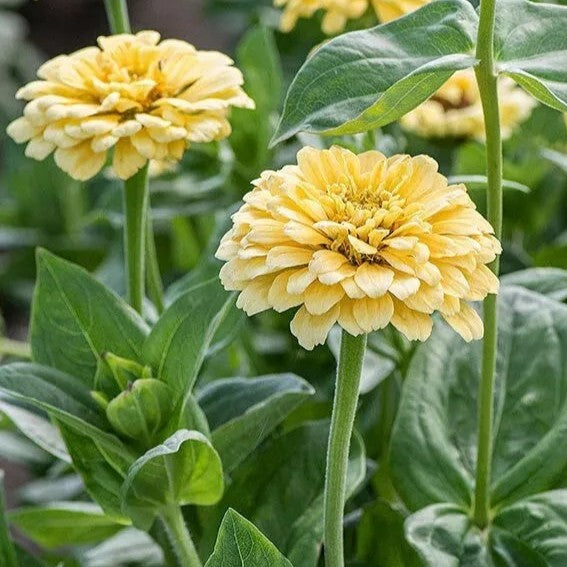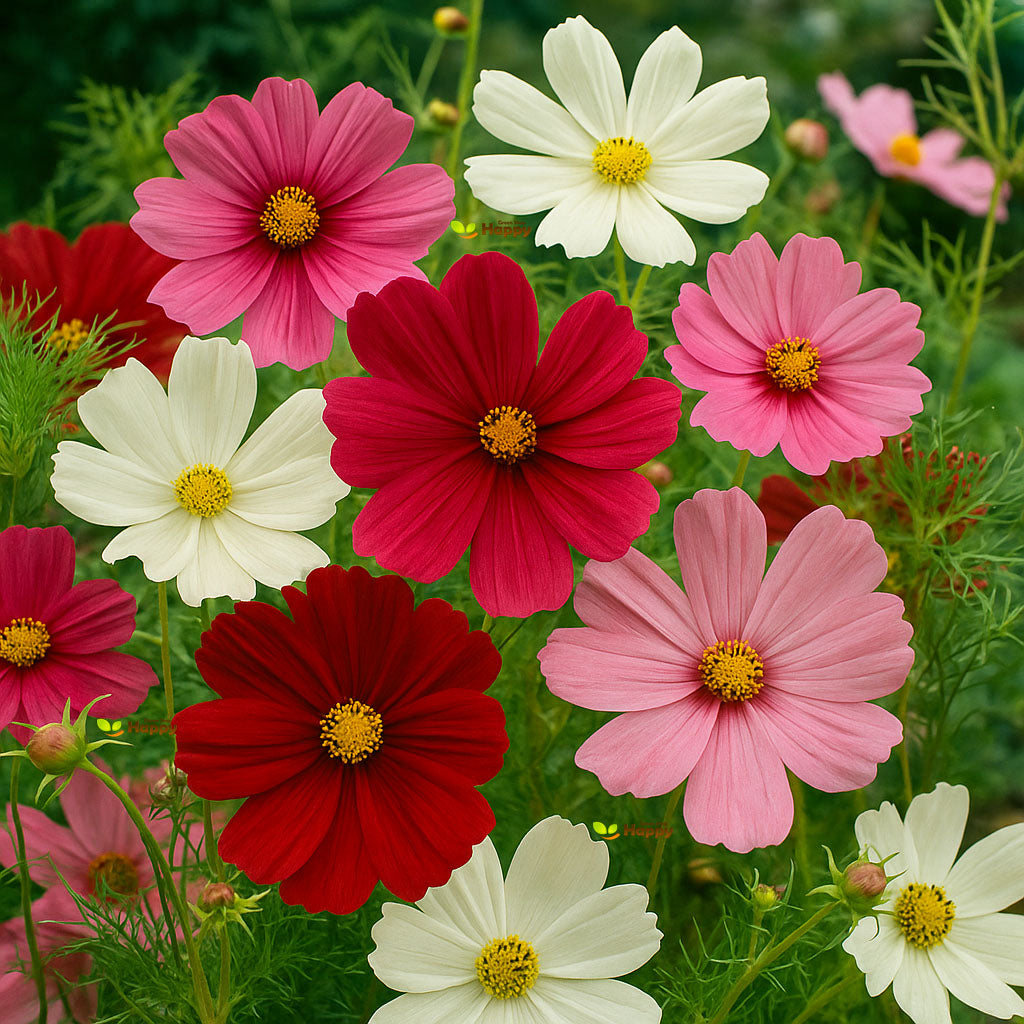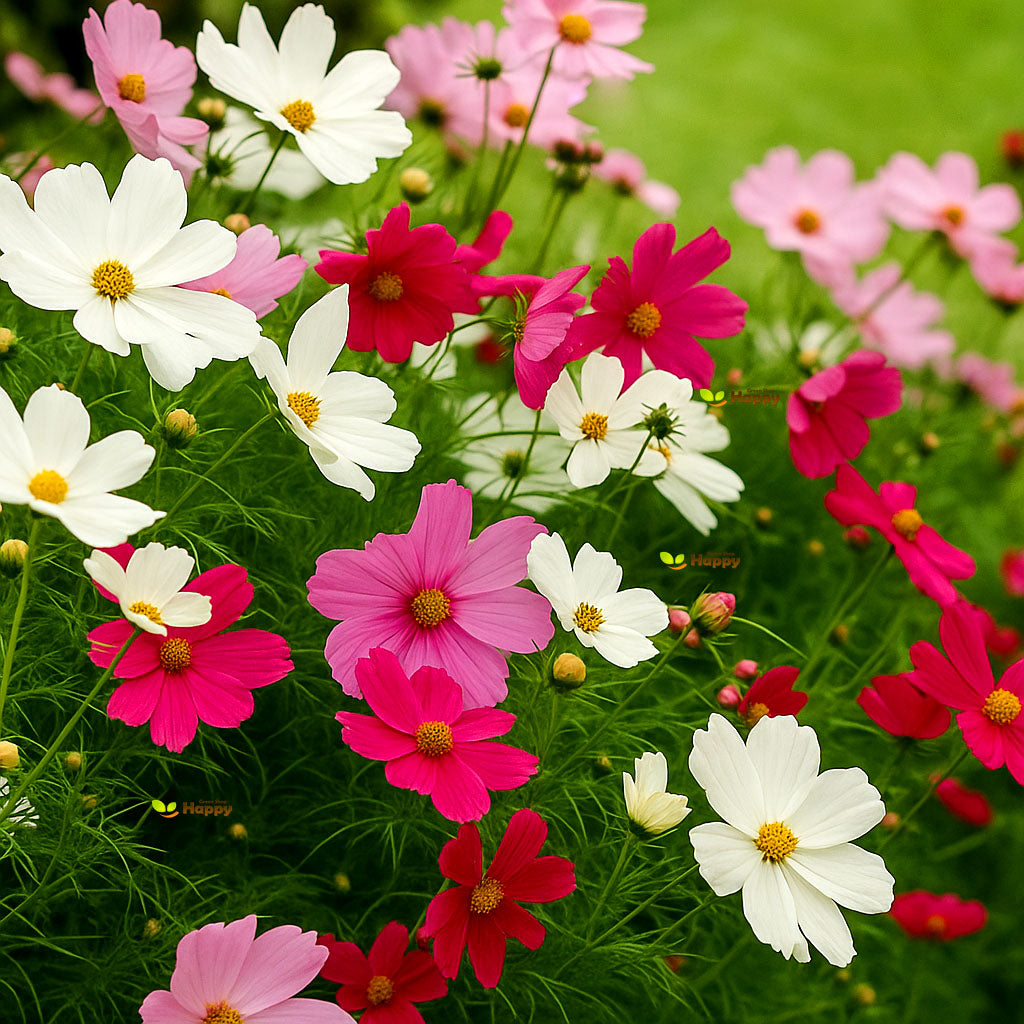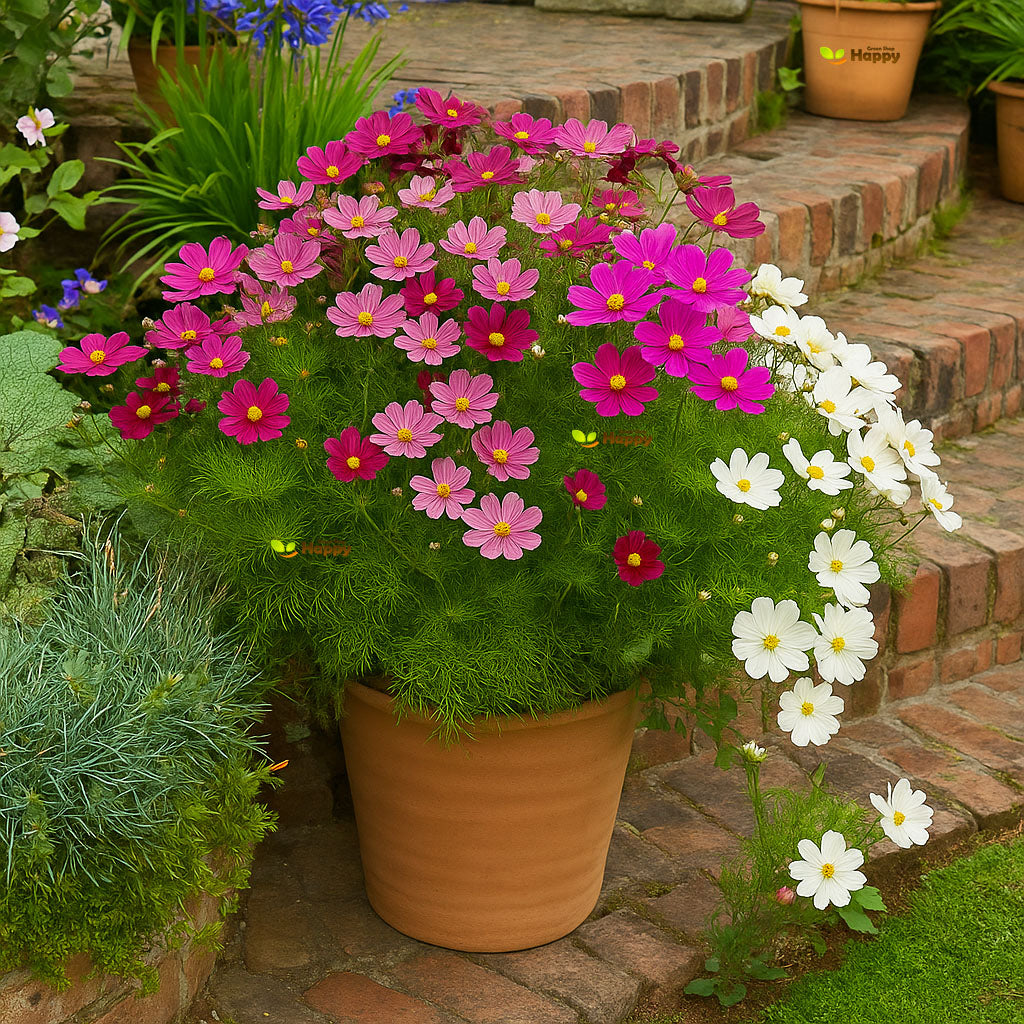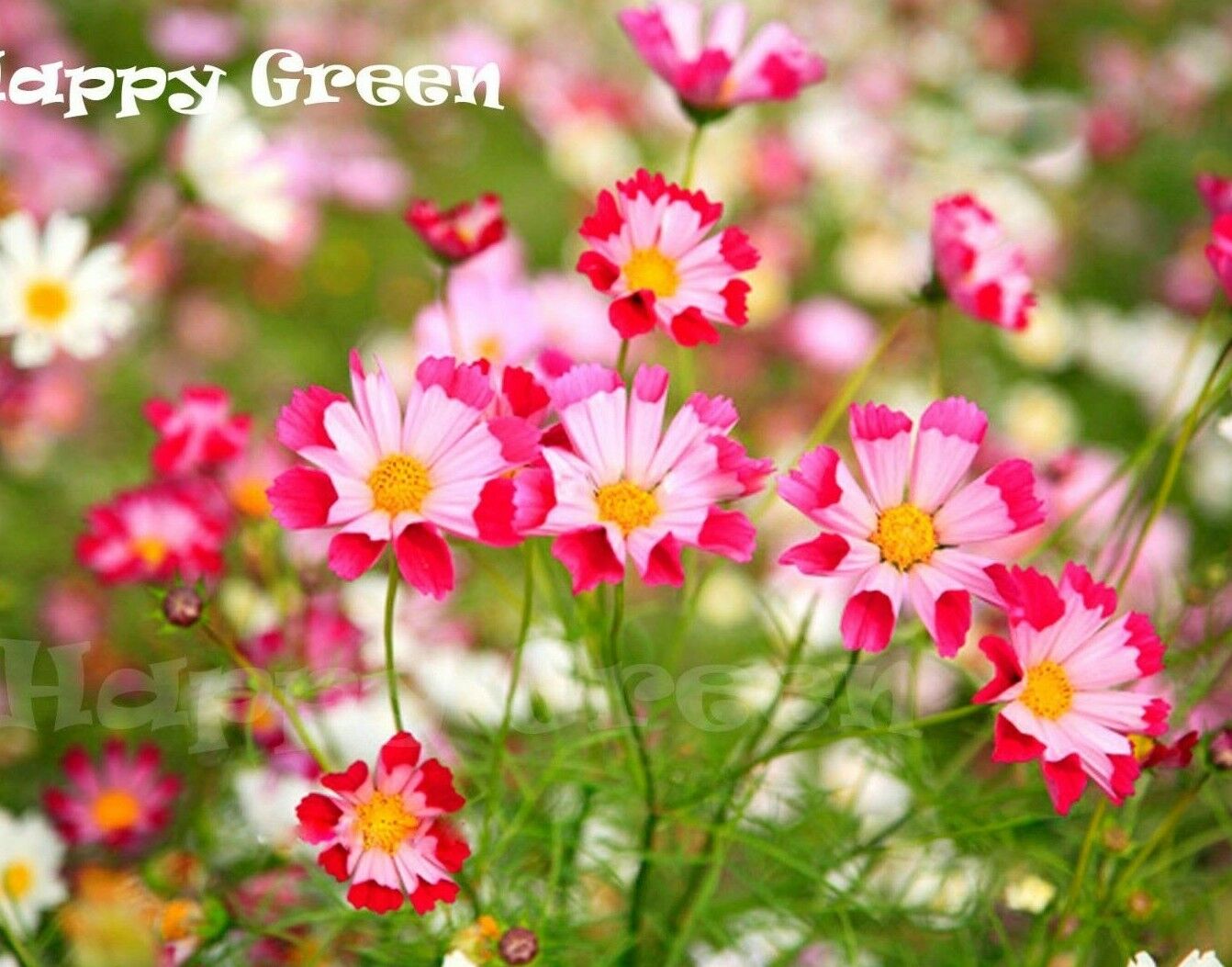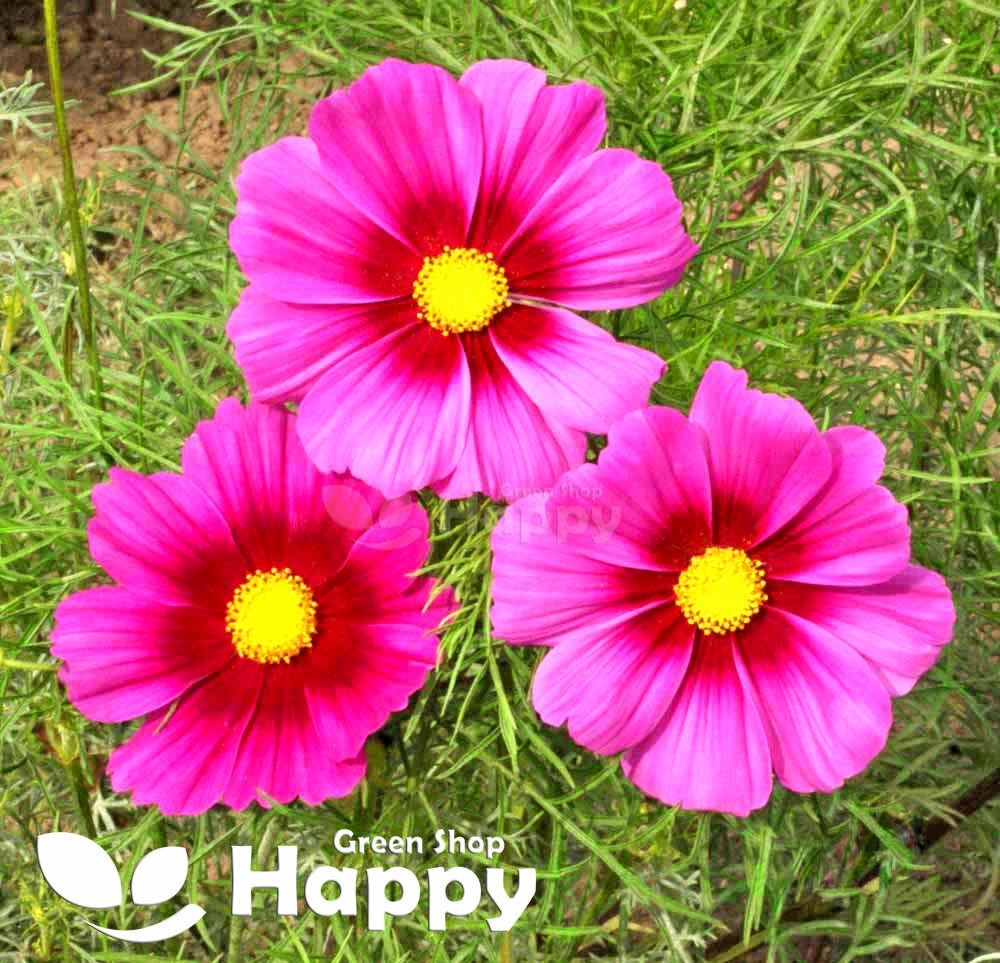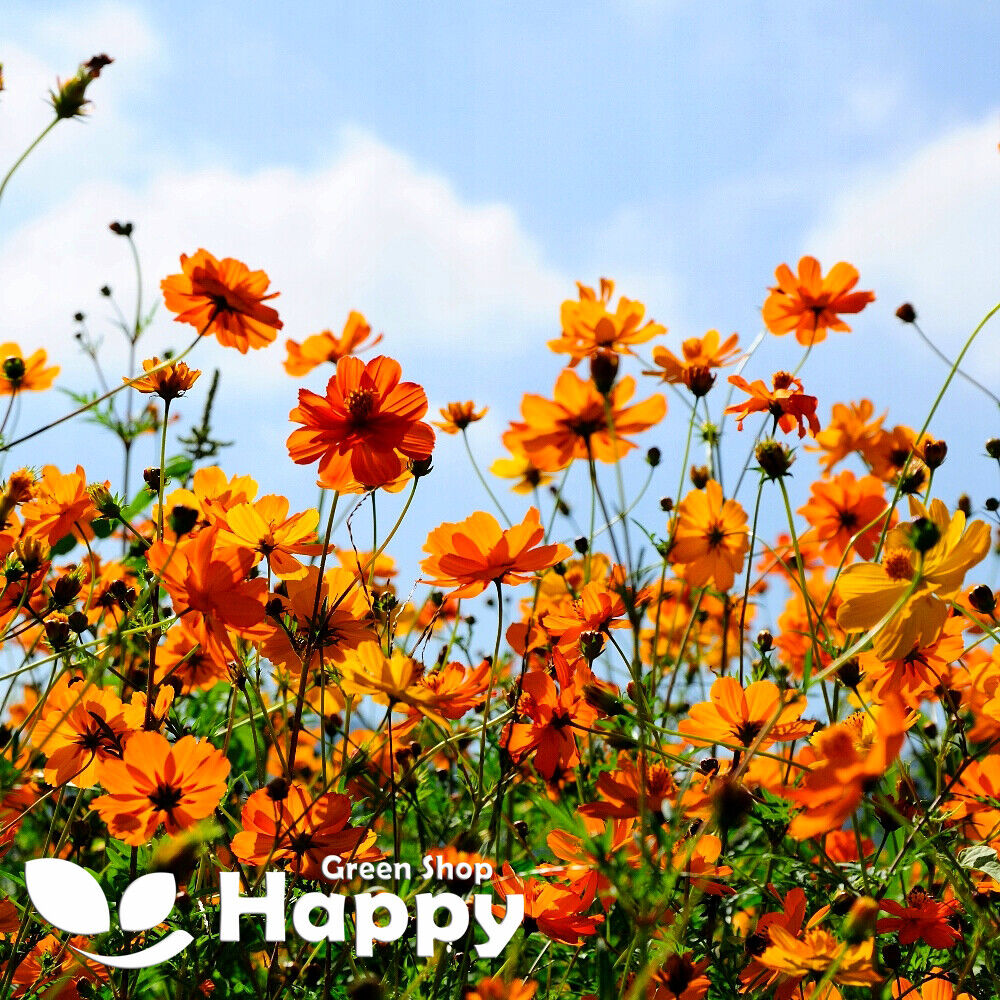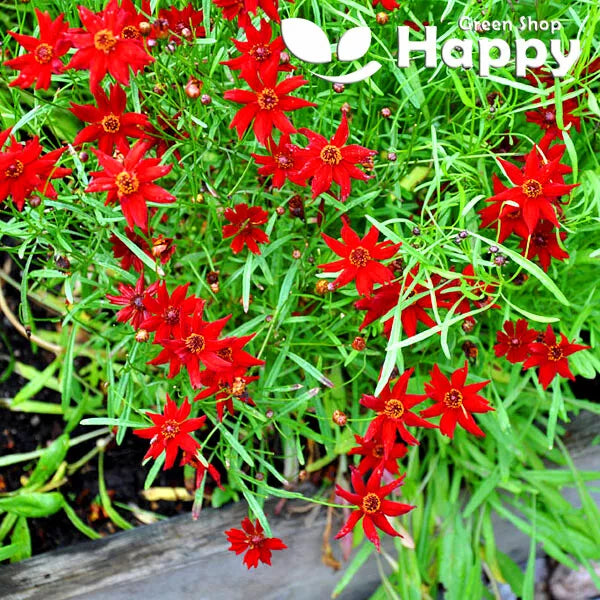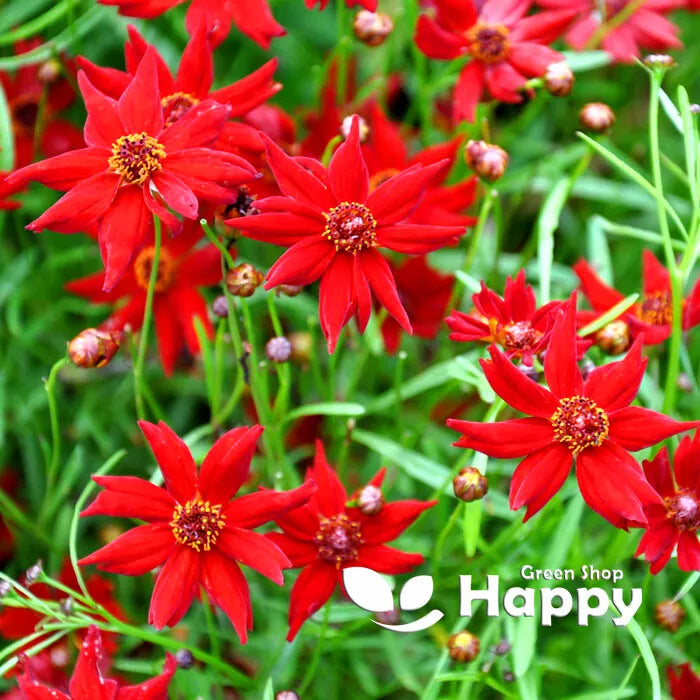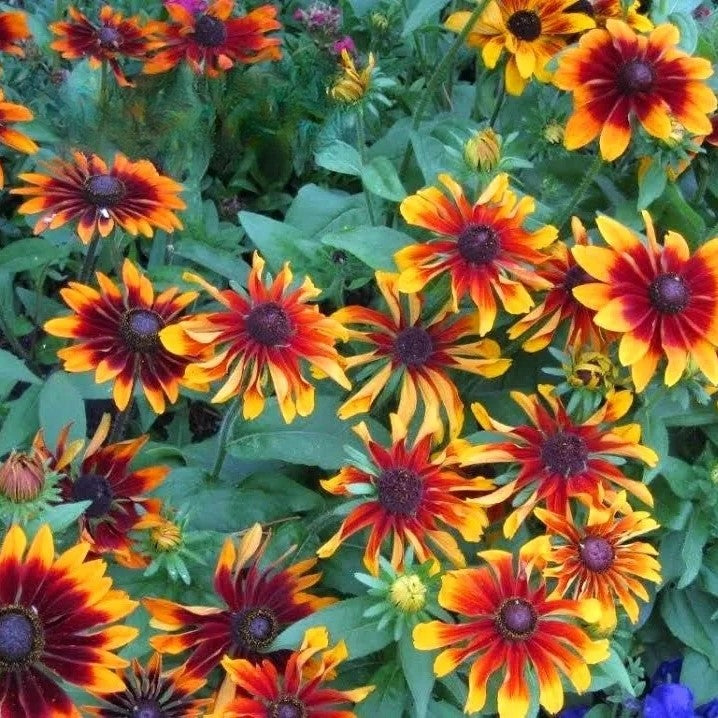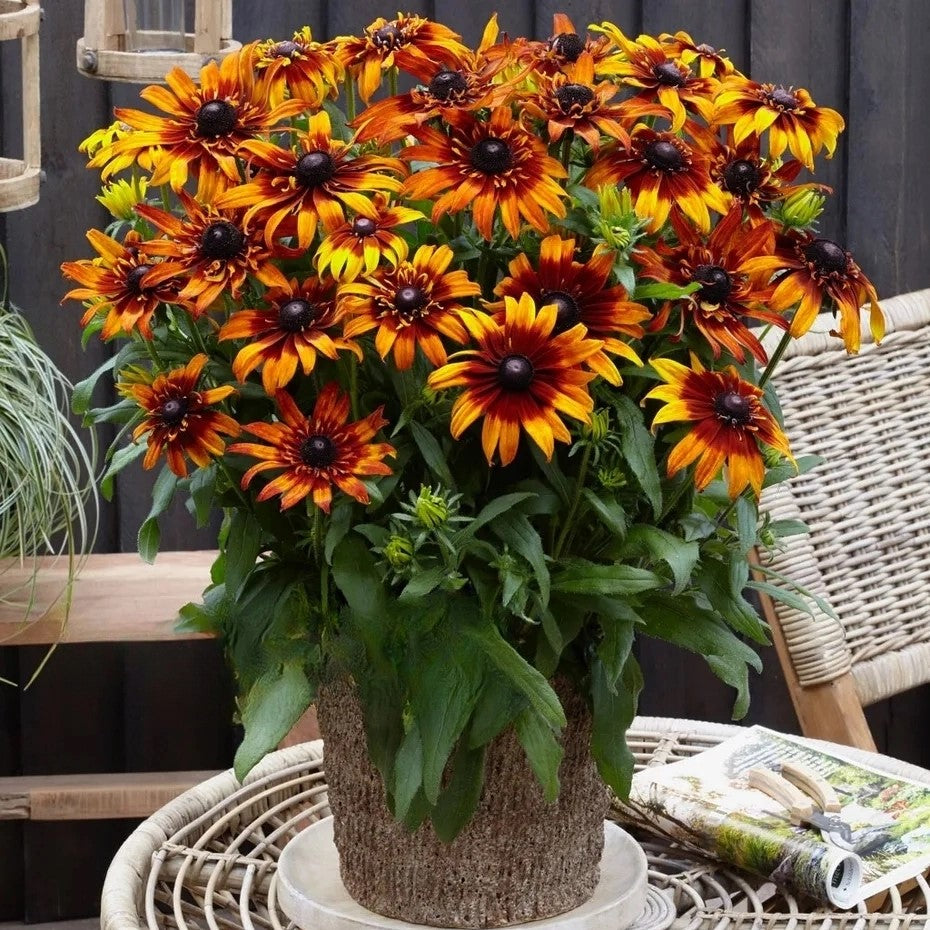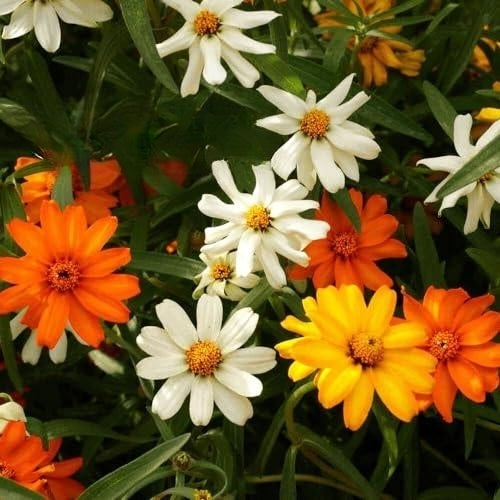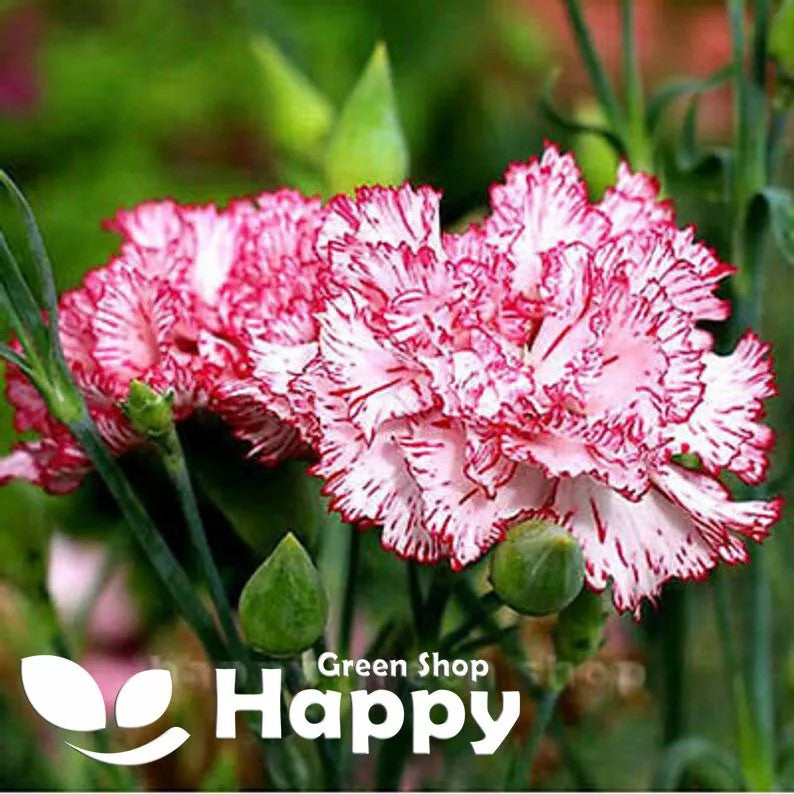Sort by:
95 products
95 products
Cosmos 'Sensation' Mix – Seeds (Cosmos bipinnatus)
The Cosmos 'Sensation' mix is a classic cottage garden favorite, producing masses of large, daisy-like blooms in shades of pink, carmine, red, and pure white. With delicate, fern-like foliage and tall, graceful stems, this variety adds a light and airy charm to borders, wildflower meadows, and cut flower displays. Easy to grow and quick to bloom, it is an excellent choice for beginners and seasoned gardeners alike.
Highlights
-
Large daisy-like flowers in a vibrant color mix
-
Ferny foliage and tall, elegant stems
-
Long flowering season, from summer to autumn
-
Excellent for cut flowers
-
Hardy and easy to grow
Key Features
-
Botanical Name: Cosmos bipinnatus
-
Variety: 'Sensation' Mix
-
Seed Count: Approx. seeds per pack
-
Height/Spread: 90–120 cm tall, 40–50 cm spread
-
Position: Full sun, well-drained soil
-
Flowering Period: June–October
Perfect For
-
Cottage gardens
-
Wildflower-style plantings
-
Borders and background color
-
Cut flower arrangements
Sowing Instructions
-
Sow indoors March–April at 18–21°C
-
Cover seeds lightly with fine compost or vermiculite
-
Germination: 7–10 days
-
Harden off and plant out after the last frost, spacing 30–40 cm apart
-
Alternatively, sow direct outdoors April–May where plants are to grow
Cosmos ‘Sea Shell’ Mix – Seeds (Cosmos bipinnatus)
The Cosmos ‘Sea Shell’ Mix is a striking and unusual variety of cosmos, admired for its distinctive tubular petals that resemble delicate sea shells. Blooms appear in vibrant shades of pink, carmine, rose, and white, creating a romantic, airy effect in the garden. This tall, free-flowering annual adds elegance to borders and makes excellent cut flowers.
Highlights
-
Unique tubular, seashell-shaped petals
-
Tall, graceful plants with airy foliage
-
Continuous blooms all summer into autumn
-
Attracts butterflies, bees, and pollinators
Key Features
-
Botanical Name: Cosmos bipinnatus
-
Variety: ‘Sea Shell’ Mix
-
Seed Count: Approx. seeds per pack
-
Height/Spread: 90–120 cm tall, 30–45 cm spread
-
Position: Full sun, well-drained soil
-
Flowering Period: June–October
Perfect For
-
Cottage gardens and wildflower-style borders
-
Tall background planting
-
Cutting for long-lasting vase displays
-
Pollinator-friendly gardens
Sowing Instructions
-
Sow indoors March–April at 18–21°C
-
Cover seeds lightly with compost
-
Germination: 7–10 days
-
Harden off and plant out after frost, spacing 30–40 cm apart
-
Can also be direct sown outdoors April–May
Cosmos 'Radiance' – Seeds
(Cosmos bipinnatus)
Cosmos 'Radiance' is a charming variety that produces large, daisy-like blooms in deep carmine-pink with a lighter halo around the golden-yellow centers. The graceful, feathery foliage and long, slender stems make it a superb choice for garden displays and cut flowers. Easy to grow and long-flowering, it’s a true summer favourite.
Key Features
-
Type: Half-hardy annual
-
Height: 90–120 cm
-
Spread: 40–50 cm
-
Flowering: June–October
-
Position: Full sun
-
Soil: Well-drained, moderately fertile
Ideal For
-
Cottage gardens
-
Wildlife and pollinator-friendly planting
-
Borders and background planting
-
Cut flower arrangements
Sowing & Growing
-
Sow indoors: March–April at 18–21°C
-
Sow outdoors: May–June directly in final position
-
Germination: 7–10 days
-
Thin/transplant to 30–40 cm spacing
-
Deadhead regularly for prolonged flowering
Cosmos ‘Polidor’ Mix – Seeds (Cosmos sulphureus)
The Cosmos ‘Polidor’ Mix is a dazzling, warm-toned variety producing masses of semi-double blooms in shades of gold, orange, and scarlet-red. Unlike the softer pastel cosmos, this species (Cosmos sulphureus) is more compact, with bushy growth and excellent heat tolerance. Perfect for bright summer borders and butterfly gardens.
Highlights
-
Vivid warm shades: yellow, orange, and red
-
Semi-double flowers with a cheerful, fiery look
-
Excellent for hot, sunny, dry spots
-
Attracts bees, butterflies, and pollinators
Key Features
-
Botanical Name: Cosmos sulphureus
-
Variety: ‘Polidor’ Mix
-
Seed Count: Approx. seeds per pack
-
Height/Spread: 60–90 cm tall, 30–45 cm spread
-
Position: Full sun, well-drained soil
-
Flowering Period: July–October
Perfect For
-
Adding vibrant warm tones to garden beds
-
Containers, borders, and cutting gardens
-
Low-maintenance summer displays
-
Pollinator-friendly plantings
Sowing Instructions
-
Sow indoors March–April at 18–21°C
-
Cover seeds lightly with compost
-
Germination: 7–14 days
-
Harden off and transplant outdoors after frost, spacing 25–30 cm apart
-
Can also be direct sown outdoors May–June
Coreopsis ‘Amulet Red’ – Seeds
(Coreopsis tinctoria)
Coreopsis ‘Amulet Red’ is a striking annual that produces masses of deep red, daisy-like blooms throughout summer. Its long-lasting flowers attract bees, butterflies, and other pollinators, making it both a decorative and wildlife-friendly choice. Perfect for borders, wildflower gardens, and cutting.
Why Grow Coreopsis ‘Amulet Red’?
-
Abundant deep red daisy-like flowers
-
Long flowering season from summer to autumn
-
Attracts bees, butterflies & pollinators
-
Easy to grow and low-maintenance
Key Features
-
Type: Hardy annual
-
Height: 45–60 cm
-
Flowers: June–October
-
Position: Full sun
-
Soil: Well-drained, moderately fertile
Ideal For
-
Borders and cottage gardens
-
Wildflower-style plantings
-
Pollinator-friendly gardens
-
Cut flower arrangements
Sowing & Growing
-
Sow outdoors: April–May in prepared soil, thin seedlings as needed
-
Sow indoors: March–April in trays, plant out after last frost
-
Germination: 7–14 days at 18–22°C
-
Spacing: 20–25 cm apart
-
Deadhead spent blooms to prolong flowering
Coneflower 'Orange Fudge' Seeds (Rudbeckia hirta)
Bring warm, glowing color to your garden with Coneflower 'Orange Fudge'. This striking Rudbeckia variety produces rich orange petals with a warm golden touch and dark contrasting centers. Long-flowering and easy to grow, they add bold charm to borders, wildlife gardens, and cut flower arrangements.
What Makes It Special
-
Unique orange blooms with dark centers
-
Long-lasting flowers from summer to autumn
-
Attracts bees, butterflies, and pollinators
Key Features
-
Botanical name: Rudbeckia hirta
-
Hardy annual / short-lived perennial
-
Height: 50–60 cm
-
Blooming period: July–October
-
Drought-tolerant and low maintenance
Ideal For
-
Cottage and wildlife gardens
-
Borders and mixed beds
-
Summer cut flower bouquets
Sowing
-
Sow indoors from February–April or outdoors from May
-
Lightly cover seeds and keep moist (germination: 14–21 days at 18–22°C)
-
Transplant seedlings after frost into sunny, well-drained soil
-
Flowers in the first season
Climbing Flower Mix – 3 g Seeds
Transform fences, trellises, and arches with this colorful Climbing Flower Mix. Including Mina (Spanish Flag), Sweet Pea, Cobaea (Cup-and-Saucer Vine), climbing beans, and Morning Glory, this blend offers a succession of vibrant flowers and lush foliage throughout summer. Easy to grow, fast-climbing, and perfect for vertical gardens.
Why Grow "Climbing Flower Mix"
-
A vibrant blend of climbing annuals
-
Covers fences, arches, and trellises quickly
-
Long-lasting color all summer
-
Attracts bees and pollinators
Key Features
-
Type: Annual climbing flower mix
-
Height: 1.5–3 m (varies by species)
-
Flowering: June–October
-
Position: Full sun
-
Uses: Trellises, fences, arches, vertical gardening
Ideal For
-
Vertical garden displays
-
Brightening fences and walls
-
Arches and pergolas
-
Pollinator-friendly plantings
Sowing & Growing
-
Sow indoors: March–April in pots
-
Sow outdoors: April–May after frost
-
Germination: 7–21 days depending on species
-
Provide strong support for climbing
-
Regular watering encourages lush growth
Classic Zinnia – Seeds
(Zinnia linearis angustifolia) – Annual
The Classic Zinnia (Zinnia linearis angustifolia) is a compact and easy-to-grow annual, loved for its masses of daisy-like blooms in bright shades of yellow, orange, and white. Unlike tall zinnia varieties, this type has a bushy, spreading habit and flowers abundantly all summer long, making it perfect for edging, borders, and pots. It is drought-tolerant, long-flowering, and pollinator-friendly, ensuring a cheerful display with minimal effort.
Key Features
-
Type: Annual
-
Height: 20–40 cm
-
Spread: 25–35 cm
-
Blooming period: June–October
-
Position: Full sun
-
Soil: Well-drained, moderately fertile
Ideal For
-
Bedding and borders
-
Containers and pots
-
Pollinator-friendly gardens
-
Low-maintenance summer color
Sowing & Growing
-
Sow indoors: March–April (in trays or pots at 18–22°C)
-
Sow outdoors: May (after frost has passed)
-
Sowing depth: 0.5 cm, cover lightly with soil
-
Spacing: 25–30 cm apart
-
Care: Prefers sunny spots; deadhead to extend flowering season
Carnation Chadbaud ‘Benigna’ – 100 Seeds (Dianthus caryophyllus)
Carnation Chadbaud ‘Benigna’ (Dianthus caryophyllus) is a beautiful, compact annual with soft pink, fragrant blooms. Perfect for borders, rockeries, and containers, it adds elegance and color to your garden from late spring to autumn. Easy to grow and long-flowering, it also attracts pollinators.
Why Grow "Benigna"
-
Fragrant soft pink blooms
-
Compact, bushy growth habit
-
Long flowering period from late spring to autumn
-
Attracts bees and butterflies
Key Features
-
Type: Annual (Dianthus caryophyllus)
-
Height: 20–30 cm
-
Flowering: May–October
-
Position: Full sun to partial shade
-
Uses: Borders, rockeries, containers, patios, cottage gardens
Ideal For
-
Small garden beds and borders
-
Rockeries and container planting
-
Patio displays and window boxes
-
Pollinator-friendly gardens
Sowing & Growing
-
Sow indoors: February–April in seed trays
-
Sow outdoors: April–May after frost
-
Germination: 10–20 days at 18–22°C
-
Thin seedlings to 15–20 cm apart
-
Prefers full sun and well-drained soil
-
Deadhead to encourage prolonged flowering
Showing 81/95




